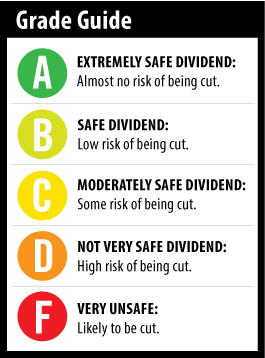 This week, we’re looking at Consolidated Communications (Nasdaq: CNSL), a small-cap telecom company with a fat 8.1% yield. Thanks to Leon for the suggestion.
This week, we’re looking at Consolidated Communications (Nasdaq: CNSL), a small-cap telecom company with a fat 8.1% yield. Thanks to Leon for the suggestion.
Consolidated Communications has paid the same quarterly dividend since 2006.
The company provides telephone, Internet and cable TV services to customers in California, Kansas, Missouri, Texas, Illinois and Pennsylvania.
[ad#Google Adsense 336×280-IA]It reported third quarter earnings results a few weeks ago.
Revenue was flat, while income from operations grew from $8.2 million last year to $26.2 million this year.
The company took $14.5 million in expenses related to an acquisition in the third quarter of 2012.
But even factoring those expenses in, Consolidated Communications experienced 15% growth in operating income.
However, the Safety Net is primarily concerned with the safety of the dividend.
While an increase in operating income is certainly positive, we’re most concerned with cash flow. Income has all kinds of non-cash expenses included in the final number.
Warning Signs
For example, in the third quarter, Consolidated Communications generated $150.8 million in revenue. During the quarter, it deducted $34.8 million in depreciation and amortization.
That $34.8 million does not represent cash that went out the door during the quarter. Much of it likely was spent in years prior and the company gets to take it as an expense during the quarter, which lowers net income and taxes (which is the point).
Think of it this way: If the company generated $150.8 million in revenue and the only expense it had for the quarter was the $34.8 million in depreciation, it would have net income of $116 million ($150.8 minus $34.8).
But that wouldn’t tell us how much cash the business generated. We’d have to add that $34.8 million back because the money was not spent this quarter, so the total would be $150.8 million. That’s called cash flow and shows how much cash the company actually took in, regardless of the net income number.
Since dividends are paid with cash, cash flow is the most important metric when analyzing dividend safety.
For the first nine months of 2013, Consolidated Communications generated $40.1 million in free cash flow. It paid $46.5 million in dividends. Last year the company’s free cash flow was $46.1 million, and it paid out over $55 million in dividends. So in the past two years, the company has not generated enough cash to cover the dividend.
In 2010 and 2011, Consolidated’s free cash flow more than covered the dividend. The difference has been that in 2012 and 2013, the company has ramped up its spending on capital expenditures.
Stick With the King
The company has not issued guidance on capital expenditures for 2014, so it’s difficult to know whether it will remain high or drop down to low enough levels for free cash flow to cover the dividend.
In the company’s third quarter earnings results press release, management goes to great pains to imply that covering the dividend is no problem. It mentions a 66% payout ratio, but that payout ratio is based on earnings, not cash flow.
To be fair, the payout ratio calculation is usually based on earnings, even though it’s flawed. As I reiterate almost every week, earnings don’t tell the whole story.
Management also mentions in its quarterly releases a figure called CAPD, or cash available to pay dividends. This figure has in fact been more than enough to pay the dividend in the past few quarters.
My problem with this is that CAPD is not a widely used metric. Perhaps management feels it’s a better representation of the company’s ability to pay the dividend. However, I’m going to stick with the more conservative and common free cash flow.
And based on free cash flow, the dividend is not being covered by the operation of the business.
Next year, earnings and revenue are expected to slightly decline. It’s hard to imagine that capital expenditures will fall meaningfully. Telecom is an infrastructure-heavy industry in which providers must constantly invest in new equipment.
I don’t necessarily expect that a dividend cut is imminent, but I would not be surprised to see one in the next few years, given the company’s inability to generate enough free cash flow to cover the dividend.
Dividend Safety Rating: C

— Marc Lichtenfeld
[ad#IPM-article]
Source: Wealthy Retirement
